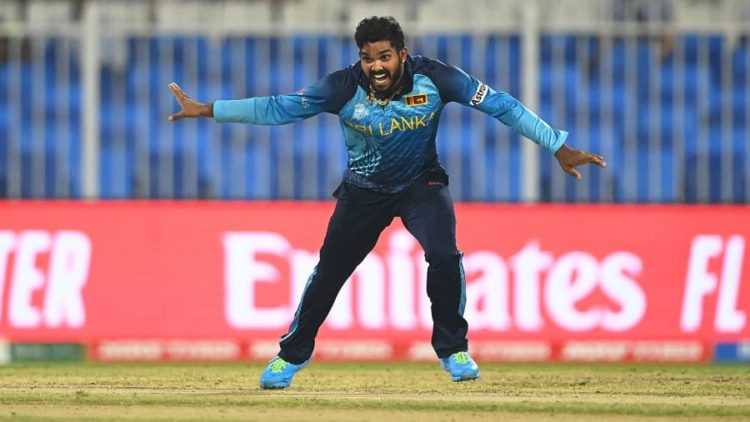COLOMBO: Led by the impressive Wanindu Hasaranga, they’ve sparked joy at this tournament. The question now is: will the board do right by them?
There is reason to be optimistic – and this will eventually become that sort of column – but first let us lay a lavish offering of caveats at the altar of fate. The first law of Sri Lankan cricket is that things never turn out as well as you hope. The second law, to which the first is subject, is that Sri Lankan cricket would never deign to conform to anything as prosaic as a law, you idiot.
You’re beginning to see the problem here, no? Every time the men’s team gets whitewashed or crashes out of a tournament and Sri Lankan cricket seems in its death throes, it rises irrepressible, a vampire from a coffin, out for one more wild night (remember the 2019 Test series in South Africa?).
Conversely – and here is what really worries – the dawns have had a tendency to be false. Anyone else recall that Test whitewash over Australia, in which a 21-year-old Kusal Mendis played one of the great innings, was labelled “the prince” by a usually reserved Graham Ford, and was the guy that would pick up the baton that had passed from Roy Dias, to Aravinda de Silva, to Mahela Jayawardene, but which had been dropped when Kumar Sangakkara retired? Apparently that was only five years ago, but since then, Mendis has had ups, downs, ducks, clashes with media, clashes with fans, a fatal car crash where he was the driver, and a Covid-rule-breaking night out that landed him a 12-month suspension: misadventures enough to pack out a decades-long career, all while he struggled desperately to live up to that early promise.
Now that the mood has been sufficiently hoovered, though, let’s get down to what we’re here for. Sri Lanka have not just exceeded expectations this T20 World Cup, in a little-too-tipsy-at-karaoke kinda way, they’ve also been fun. It starts with the bowlers, as so many good things about cricket must. Dushmantha Chameera, a little more muscle now than he used to have, but vitally, also more swing and control, has touched 150kph in his powerplay overs, and delivered some of the tournament’s meanest bouncers, of which no less a batter than Quinton de Kock was the latest victim. Joining him on the higher reaches of the speed charts has been Lahiru Kumara, whose bowling radar still needs work, but whose age – 24 – should give him plenty of time to work on that accuracy.
And it is that youth from which belief springs, even when, as now, they’ve lost three consecutive matches. Opener Pathum Nissanka is 23, but only Jos Buttler and Babar Azam have scored more than his 170 runs so far this tournament. Charith Asalanka, 24, hit Sri Lanka’s best match-winning innings, an 80 not out off 49 balls that formed the spine of the biggest second-innings total so far of the World Cup. Elsewhere, a 21-year-old Maheesh Theekshana has held his nerve against some of the most explosive batters on the planet, and Bhanuka Rajapaksa – a little older at 30 – has provided some desperately-needed middle-order firepower.
The steepest rise, of course, has belonged to 24-year-old Wanindu Hasaranga, who only made it into the T20 side in late 2019, and despite being inactive most of last year due to the pandemic, has almost indisputably now become one of the half-dozen most valuable T20I players in the world. He is arguably the bowler of this tournament too; of his 14 wickets so far, eight have come in the Super 12 stage, and he’s been effective at every phase, taking two wickets in the powerplay against England, dominating the middle overs against South Africa, wily at the death. It sounds like blasphemy but, in this tournament, his googly has almost reached the Lasith Malinga yorker for they-know-it’s-coming-but-they’re-still-getting-out-to-it value. All but one of his World Cup wickets are from that ball.
You suspect that for many of these players, the next 18 months of being subjected to intense analyst scrutiny could be the make-or-break. Since we are too woke to accredit Sri Lanka’s sudden swings in fortunes to an oriental unknowability, here is a theory: Sri Lanka’s still produces cricketers with sufficient talent to make an impression upon arrival at the top level, but whose flaws have survived the inadequate domestic system and these are then ruthlessly targeted by international sides. The board has for years promised a more rigorous domestic competition, but is yet to deliver. And beyond this how long will they keep Mickey Arthur, under whose watch several of these players have improved substantially, around? In recent years, the board’s response to even the mildest crisis (the caterers didn’t use enough salt) was to sack the coach, replace the captain, replace the selectors, or do all of the above, before the new appointees favour a whole different set of players and ideas, and the cycle begins again. This is why we can’t have nice things.
But pehaps more for this side than for any other over the past few years, it is vital that Sri Lanka sticks by them. With any luck, they’ll all stay together for the next five years. Collectively, their talent ceiling is high. Sure, they’ve won just one match in the Super 12s, got nowhere near the semi-final and, fine, been thoroughly outplayed in key moments, but they have, in their own way, and for the first time in a long while, sparked joy.
© ESPNcrickinfo




